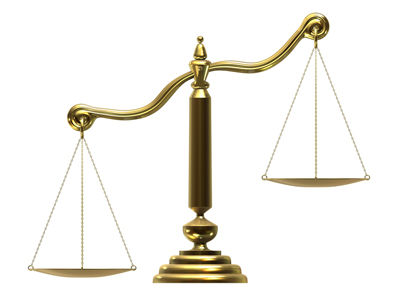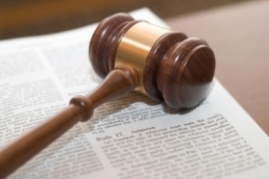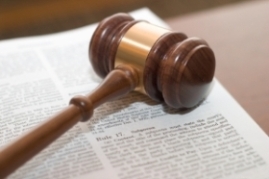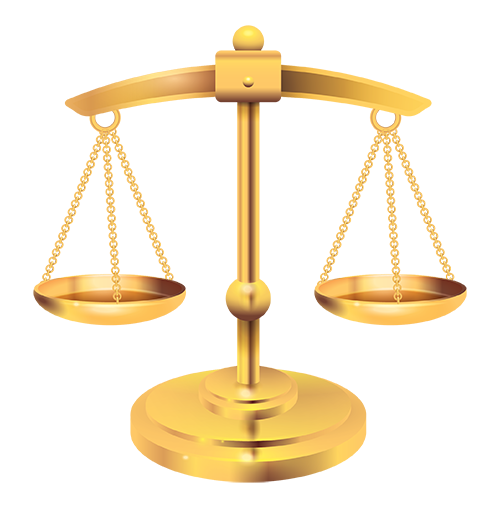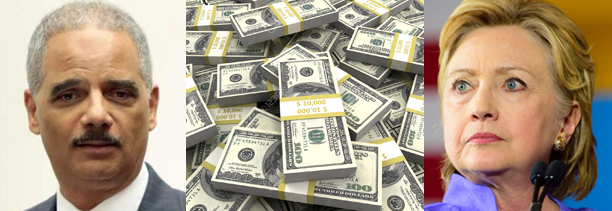What Next Rough Beast...The Second Coming of Nuisance Law Litigation
The Legal Wilderness
Dedicated to Searching and Exploring our Legal Frontiers to Find, Categorize, and Tag the wild, Untamed and Predatory Applications of the Law
What Next Rough Beast...
The Second Coming of Nuisance Law Litigation
Joseph F. Speelman
General Counsel
Petro-Logistics S.A.
Geneva, Switzerland
Part I
A Brief History of Public Nuisance Law Litigation
 Public Nuisance is not a new concept. It is an ancient common law concept dating back hundreds of years to the beginning of English common law. 1. It can be traced to the feudalism of the Middle Ages and was transported to the North American continent by English settlers. 2.
Public Nuisance is not a new concept. It is an ancient common law concept dating back hundreds of years to the beginning of English common law. 1. It can be traced to the feudalism of the Middle Ages and was transported to the North American continent by English settlers. 2.
The “tort” has always been difficult to understand and apply. When Horace Wood published the first American treatise on nuisance law in 1875, he described pubic nuisance as a “wilderness of law”. 3. As the Industrial Revolution kicked into high gear, industrialization spread south, west, and everywhere in between. With that came larger businesses, making more things, selling more things, building many more things, and paying wages to people who had “never had it so good”. Companies grew as the nation became more industrialized and markets were no longer “down the street”; they were in St. Louis, Kansas City, Denver, eventually Los Angeles, San Francisco joined the list of growing markets. National and regional companies grew and markets became regional and national. Commerce fundamentally changed to a national process.
As the above developed; regional, state, and a myriad of local governments also developed and with them came a host of laws (statutes), regulations (regulators) and enforcement processes (police powers). While the industrialization caused good things to happen, along with it came pollution, overreaching business practices, and health and safety issues among other problems. These governments, through legislative bodies, passed laws (statutes), using their unique ability to investigate and regulate problems and issues before them as representatives of the voters. With these developments, which were fundamental, the usefulness of public nuisance law, through common law legal processes, became less effective and more difficult to use to properly regulate issues associated with a national commerce. 4.
In 1850, in the midst of the industrialization and a “Gold Rush”, California was admitted to the Union, and a state constitution, drafted by a constitutional convention in 1849, became the legal organizing principle of the California government. 5. Over time, the different legal systems in California; a Civil Law system inherited from Spain and Mexico, and a Common Law orientation from the American states, (with a judicial involvement and including nuisance law), were “merged”, and, after some debate, the state proclaimed English common law as the formal legal system. 6.
There has always been a tension between the common law notion of judge made laws to deal with the common law perception of torts on the one hand, and statutes, regulations, and the legislative process of prescribing limits and obligations on society, including the economic processes such as commerce, business, and development, on the other. The concept of public nuisance, in particular, has caused great confusion amongst judges, commentators, legislators, and commerce because it appeared to be a concept without a detailed and understandable process to deal with what may, or may not be actionable concepts of law. 7. Nuisance Law, always at odds with legislation, regulation, and governmental systems to resolve public issues, became less of an acceptable process for resolving difficulties of the national commercial system. Legal scholars, judges, and commentators continued to criticize it. Some described it as “notoriously contingent and unsummarizable”. 8 . Years later, William Prosser, Reporter for the Restatement (Second) of Torts, described nuisance law as an “impenetrable jungle”, and as a “legal garbage can full of vagueness, uncertainty and confusion”. 9. In 1908 Roscoe Pound noted, at such an early date, the “indifference, if not contempt, with which (legislation) is regarded by courts and lawyers.” 10. California case law has acknowledged the importance of statutory primacy in public nuisance cases, arising from an aversion to “standardless” liability. 11.
It is generally becoming recognized that economies are so “complex and interrelated” that jurists need to draw upon the universe of common law and statutory and administrative processes to properly administer just laws. 12. More importantly, when legislative and regulatory standards exist that deal with an issue, those policies must be considered before any responsibility for creating and, finally, imposing any type of “abatement” a public nuisance concept can impose. Such a decision is one of public policy, and from a judicial standpoint, can only be justified from such policies that originate outside the courtroom. 13. The preceding pronouncement could have easily come from any number of courts across the US, but as you can see from the citation, it comes from a California appellate case as well as a New Jersey case. With the above history of public nuisance in mind, it is now important to understand the path this type of litigation has taken in the US and why public nuisance litigation continues to be raised by plaintiff attorneys in mass tort settings across the country.
Efforts to Expand Public Nuisance Law in Mass Tort Litigation
Environmental plaintiff counsel sought to influence the Restatement of Torts (Second) drafting to allow for “private citizen” standing to sue, in tort, for environmental “damages”. In essence they sought to remove the element of “breach” from negligence actions as well as the element of “defect” from products liability actions. Such efforts, had they succeeded, would have expanded those traditional tort actions dramatically. These efforts by the environmental plaintiff counsel did not succeed in expanding the public nuisance cause of action but their efforts did affect the traditional torts in relation to parties with standing to bring such actions. All this is chronicled very thoroughly in an excellent discussion of the situation by Victor Schwartz, Phil Goldberg & Corey Schaecher in their 2010 article on attempted expansion of the public nuisance law setforth herein below. 14.
The asbestos litigation of the ‘80s and ‘90s, while failing to get any decisions favorable to the plaintiffs on public nuisance causes of action, nevertheless ultimately ended in an absurd legal and policy debacle when, after countless mass tort cases resulted in the bankruptcy and closing of over 100 manufacturing companies across the country with accompanying dramatic losses of jobs, the plaintiff bar took huge contingent fee settlements and then ended the process by agreeing to the creation of trust funds totaling tens of billions of dollars to supposedly fund individuals harmed by asbestos. 15. The effect of this was to essentially create an inexhaustible “ATM” for the American plaintiff bar to draw upon to pursue similar, aggressive, predatory mass tort actions against American commerce. It was at the time the largest transfer of wealth in American legal history.
The best description of this “train wreck” in American commerce is as follows
“A review of the scholarly literature indicates a substantial degree of indifference to the causes of this civil justice system failure. Many of the published articles on asbestos litigation focus on transactional costs and ways in which the flow of money from defendants to plaintiffs and their lawyers can be expeditiously and efficiently prioritized and routed. The failure to acknowledge, let alone analyze the overriding reality of specious claiming and meritless claims demonstrates a disconnect between the scholarship and the reality of the litigation that is nearly as wide as the disconnect between rates of the disease claiming and the actual disease manifestation.” 16. Nothing more need be said.
The asbestos litigation, along with enriching a number of plaintiff counsel and creating the then largest transfer of wealth in US legal history, also brought together a cadre of newly wealthy plaintiff counsel who determined to refine their newly created litigation model in order to focus on a larger sector of the US economy, the Tobacco Industry. 17. The concept of large, national class action litigation emerged as part of the tobacco litigation. Plaintiff counsel sought the large classes, among other reasons, to create enhanced economic and political pressure on target commercial entities nationwide. When the class actions began to fail because even those classes that were certified were being rejected on appeal, usually because appellate courts invariably found that individual issues dominated common issues of law and fact, the plaintiff counsel found a solution to the above defect: they began to induce states or cities to bring the mass suits on behalf of their citizens. This allowed the mass tort to proceed with aggregated claims but without having to “run the gauntlet” of class action certification procedures. 18.
The concept of public nuisance tort liability in cases against product manufacturers was introduced along with traditional tort liability theories in the tobacco mass plaintiff cases that really began in the 1990s. State attorneys general worked through and with well funded contingency-fee attorneys to sue tobacco manufacturers alleging billons of dollars in damages or reimbursements for state Medicaid and other health-program expenditures. 19. One of the many claims asserted by the plaintiff counsel was that the tobacco companies created a public nuisance by selling cigarettes. This despite hundreds of laws in virtually all states and most cities that expressly allows the selling of tobacco products, taxes the sales, and in virtually all cases regulates those sales as to minors. 20. The tobacco litigation described above ended in an all inclusive settlement set out in a 1998 Master Settlement Agreement. Under the terms of this agreement, the tobacco manufactures agreed to and did transfer $246 Billion to the states and the state’s contingency-fee attorneys. 21. The tobacco settlement marks, to date, the largest transfer of wealth in American legal history. In scarcely 10 years, the American plaintiff bar had removed almost a half trillion dollars from the American business economy.
All of the hype and “high fives” from the plaintiff bar almost….almost drowned out an interesting and critical fact. There was only one ruling by a court regarding the public nuisance theories the plaintiff counsel included in their various tobacco law suits. They lost … in Texas v. American Tobacco Co, the court dismissed the claim of public nuisance, stating that it was “unwilling to accept the state’s invitation to expand a claim for public nuisance”. 22. The above did not deter the plaintiff bar in the least as they claimed public nuisance liability in subsequent law suits on behalf of states and numerous cities against manufacturers of guns and lead paint. 23.
Trying to capitalize on the publicity momentum after the tobacco settlement, plaintiff counsel next brought public nuisance claims in key, targeted jurisdictions against manufacturers of lead based paint and certain gun manufacturers. The plaintiff attorneys funded many of the gun and lead paint cases. 24. Lead paint cases were filed in Illinois, Missouri, New Jersey, Ohio, Wisconsin, California, and Rhode Island. Cases against gun manufacturers were filed in several cases including Indiana, Pennsylvania, New Jersey, Massachusetts, Florida, Illinois, and Ohio. 25. The gun cases were eventually rejected the extension of public nuisance tort theory to include a manufacturer that had sold a legal product for injuries caused by the product after it had been sold. Further, most cases also hold that any balancing of harm versus utility of manufacturing a gun is a policy question better suited for the legislature. Finally, public nuisance suits against gun manufacturers have been restricted or totally precluded by the enactment by Congress of the Unlawful Commerce in Arms Act of 2005. 26.
The Supreme Courts in Illinois, Missouri, and New Jersey all rejected the plaintiff’s public nuisance theories regarding lead paint manufacturers being responsible for lead poisoning in children without any evidence the paint was the cause of the poisoning, without including landlords and owners of the property as defendants, and the fact that when the paint was sold, more than 30 years prior to the incidents, most of the states had construction codes that required lead paint to be used in new residential construction. The Supreme Court of Ohio allowed the theories to be causes of action, but the Ohio legislature, within weeks of the decision, overrode the opinion. Wisconsin had a trial court jury rule against the plaintiff and giving a defense verdict to lead paint manufacturers. The Santa Clara case is the sole remaining case, still pending at the appellate level after the trial court held lead paint manufacturers liable for approximately $1.5 billion in costs to remediate all pre 1953 dwellings in several California cities. Oral argument on the defendants’ appeal was held on August 28, 2017 and the appellate court took the matter under advisement. 27.
The case was tried to a jury twice, with a hung jury the first time and, after substantial modifications to the jury instructions upon motion of the State of Rhode Island, the jury found the lead paint manufacturers liable for the remediation of over 215,000 pre-1953 residential structures in the State of Rhode Island, an estimated $2 billion dollar liability. The verdict, publicized in national news papers and media, created an “overhang” on the stock of the public companies that were defendants. The defendants filed for an immediate appeal, which was granted by the Rhode Island Supreme Court. 28.
Oral arguments were held in Providence, Rhode Island in early 2008. Amicus briefs were filed on both sides prior to the arguments. Additionally, scholarly articles were published in noted law reviews on the case across the nation. Two such writings stand out and above other submissions in the appellate record. The first is an amicus brief filed by Professor James A. Henderson, a Reporter for the Restatement (Second) of Torts, and a professor at Cornell University School of Law. Professor Henderson, in part, stated:
“Make no mistake about it, aggregative torts are inherently lawless and unprincipled….in the remarkable degree to which they combine sweeping, social-engineering perspectives with vague, open-ended legal standards for determining liability and measuring damages. In effect they create judicial legislation and regulatory power in courts never intended or permissible in a Democracy….” 29.
The second is a law review article published in the Michigan State University Law Review in 2007 by Richard O. Faulk and John S. Gray, members of the LyondellBasell defense team. The article is entitled “Alchemy in the Courtroom? The Transmutation of Public Nuisance Litigation”, 2007 Mich. St. L. Rev. 941 (2007). 30.
On July1, 2008 the Supreme Court of the Nation’s smallest state, Rhode Island, gave a loud and mighty roar as it unanimously rejected out of hand the public nuisance law as a means to sue manufacturers of lawful products. In so ruling, the Court conforms to the traditional role of judges presiding over common law controversies, and joined a growing list of other state supreme courts that have refused to enlarge the boundaries of this ancient tort. 31.
The Rhode Island Supreme Court took the extraordinary step to not only reverse the jury trial judgment but also to render final judgment in favor of the defendants in this case. In the direct, incisive, and well written unanimous opinion the court favorably referenced the Faulk & Gray law review article mentioned above, four separate times citing approval of the points in the Michigan State law review article. Victory, finally, was ours.
And so the public nuisance abusive scourge was finally and forever defeated and removed as a legitimate and appropriate legal theory and strategy available to the plaintiff bar. Public nuisance, as a device to create legislation, social policy, and regulation by judicial fiat was finished. In a short year and a half, the Supreme Courts or legislatures of 6 major states across the country had ruled against the plaintiff mass tort bar’s misuse of public nuisance as a tort theory. All was good –
Or so we thought!
I end Part I of this series on Public Nuisance Litigation with a headline in the June 14, 2016 San Diego Union-Tribune :
PUBLIC NUISANCE LAWSUITS SPIRALING OUT OF CONTROL
The article goes on to recite that cities like San Diego, Berkeley and Los Angeles have been convinced to sue US companies for enormous sums.
Part II
The Second Coming of Nuisance Law Litigation
Be Careful Out There….
Footnotes
- Bloomberg BNA, “Is the Public Nuisance Universe Expanding?”
- Richard O. Faulk & John S. Gray, “Public Nuisance at the Crossroads: Policing the Intersection Between Statutory Primacy and Common Law”, 2012 Chapman L. Rev. Vol. 15:3, p. 500 (2012).
- Chapman, ibid, citing Louis A. Halper, “Untangling the Nuisance Knot” ; 26 Boston College EnvH Affairs L. Rev., p 88, 90 (1998).
- Faulk & Gray, Supra note 2, at 504.
- Steve Wiegand, “A Zigsag Path Led to Statehood”, Sacramento Bee (Jan. 18, 1998).
- “The Common Law of England, as far as it is not repugnant to or inconsistent with the Constitution of the United States, or the Constitution or laws of the State, is the rule of decision in all courts of this State”, Cal. Civ. Code Sect. 22.2 (2008), (The predecessor of this section, section 4468 of the California Political Code, was adopted in 1850).
- Richard O. Faulk, “Uncommon Law: Ruminations on Public Nuisance” Mo. Envtl. Law & Policy Review, Vol. 18, No 1, p. 3 (2010).
- Halper, Supra, note 3, at 90.
- Halper, Supra, note 3.
- Roscoe Pound, “Common Law and Legislation”, 21 Harvard L. Rev. 383, 383-84 (1908).
- People ex rel. Gallo v Acuna, 929 P. 2d 596, 606 (Cal. 1997).
- Richard O. Faulk, Supra, Note 7, at pg. 6.
- Faulk, Supra, at pg 6, citing People ex rel. Gallo v. Acuna, 926 P. 2d 596 (Cal. 1997) (which discusses legislative efforts to address gang activity) and In Re Lead Paint Litigation, 924 A. 2d. 484, 491-94 (NJ 2007) (reviewing legislative efforts to address childhood lead poisoning).
- Victor E. Schwartz, Phil Goldberg, & Cory Schaecher; “Game Over? Why recent State Supreme Court Decisions Should End the Attempted Expansion of Public Nuisance Law”, 62 Okla L. Rev., p. 637, (2010).
- “Asbestos Bankruptcy Trusts: A 2013 Overview of Trust Assets, Compensation & Governance”. LexisNexis legal newsroom. By Marc Scareella and Peter Kelso, Reporters.
- Lester Brickman, “On the Theory Class’s Theories of Asbestos Litigation: The Disconnect Between Scholarship and Reality”; 31 Pepperdine L. Rev., No. 33, p. 31.
- Richard L. Antognini, “New U.S. Tort Litigation: To Go Warily Where No One Has Gone Before”, Defense Counsel Journal, October 2000, P. 454-461.
- Antognini, ibid,p 455-456, citing Castano, 160 FRD 544, 560 (E.D. La) and 84 F. 3rd at 750-52.
- Lauren E. Handler & Charles E. Erway III, “Tort of Public Nuisance in Public Entity Litigation: Return to the Jungle?”
- Victor E. Schwartz,Supra at note 14, pg 638.
- See Susan Beck, “The Lobbying Blitz over Tobacco Fees: Lawyer Went All Out in Pursuit of Their Cut of a Historic Settlement: And the Arbitrators Went Along”, Legal Times, Jan. 6, 2003 at pg 1. See 2003 WLNR 18323549.
- 14 F. Supp 2d 956, 973-74 (E.D. Tex 1997).
- Victor E. Schwartz, Supra at Note 14, pg. 639 citing Michael DeBow, “The State Tobacco Litigation and the Separation of Powers in State Governments: Repairing the Damage”, 31 Seton Hall L. Rev. 564-65 (2001); Handler & Erway, supra note 19 at 487-90.
- Howard M. Erichson, “Private Lawyers, Public Lawsuits” Plaintiffs Attorneys in Municiple Gun Litigation”, suing the Gun Industry: A Battle At the Crossroad of Gun Control and Mass Torts, 129, 130, (2005).
- Richard O. Faulk & John S. Gray, “Getting The Lead Out? The Misuse of Public Nuisance by Public Authorities and Private Counsel”. Citing Victor E. Schwartz and Phil Goldberg, “The Law of Public Nuisance: Maintaining Rational Boundaries on an Irrational Tort”, 45 Washburn L.J. 541-83 (2006).
- Faulk & Gray, Supra, Note 25; 15 U.S.C. sec 7901-7903, 18 U.S.C. sec 922, 924).
- Faulk & Gray, Supra, Note 25, p. 184-200.
- Personal recollection and reflection of this author, who was, during the time of this litigation, the Chief of Litigation for LyondellBasell , one of the defendants in the case.
- James A. Henderson, Jr, “The Lawlessness of Aggregative Torts”, Hofstra Law Review, Vol 34:2, pg. 337; personal recollection and reflection of this author, Supra at note 28.
- Richard O. Faulk & John S. Gray, “Alchemy in the Courtroom? The Transmutation of Public Nuisance Litigation”, 2007 Mich. St. L. Rev. 941, (2007).
- Thomas R. Bender, Richard O. Faulk, John S. Gray, “The Mouse Roars! Rhode Island High Court Rejects Expansion of Public Nuisance”, 2008, Washington Legal Foundation publication.



